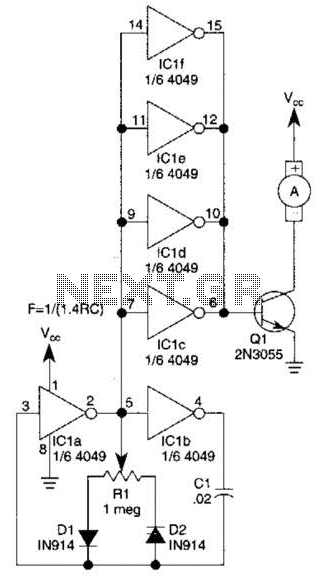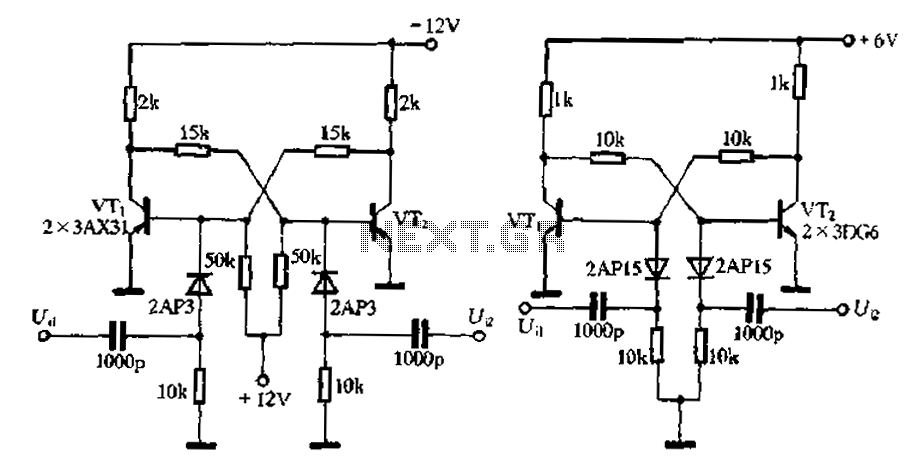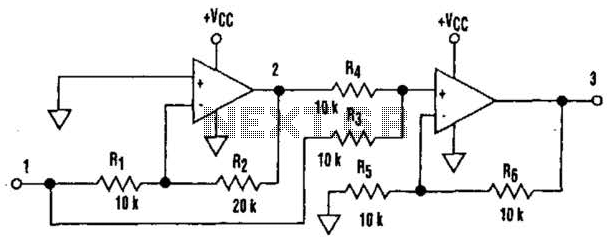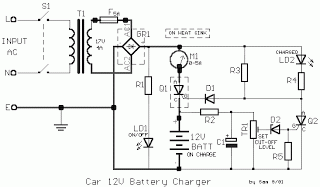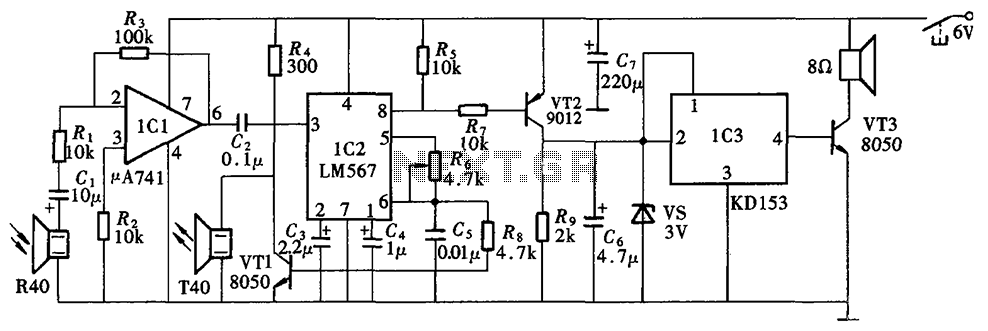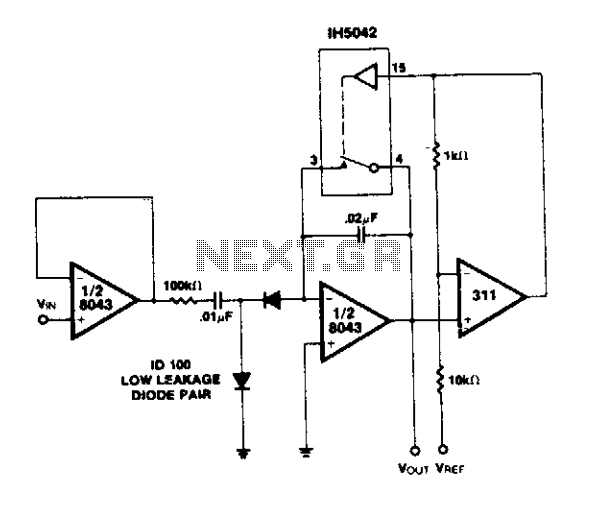
Mini DDS circuit
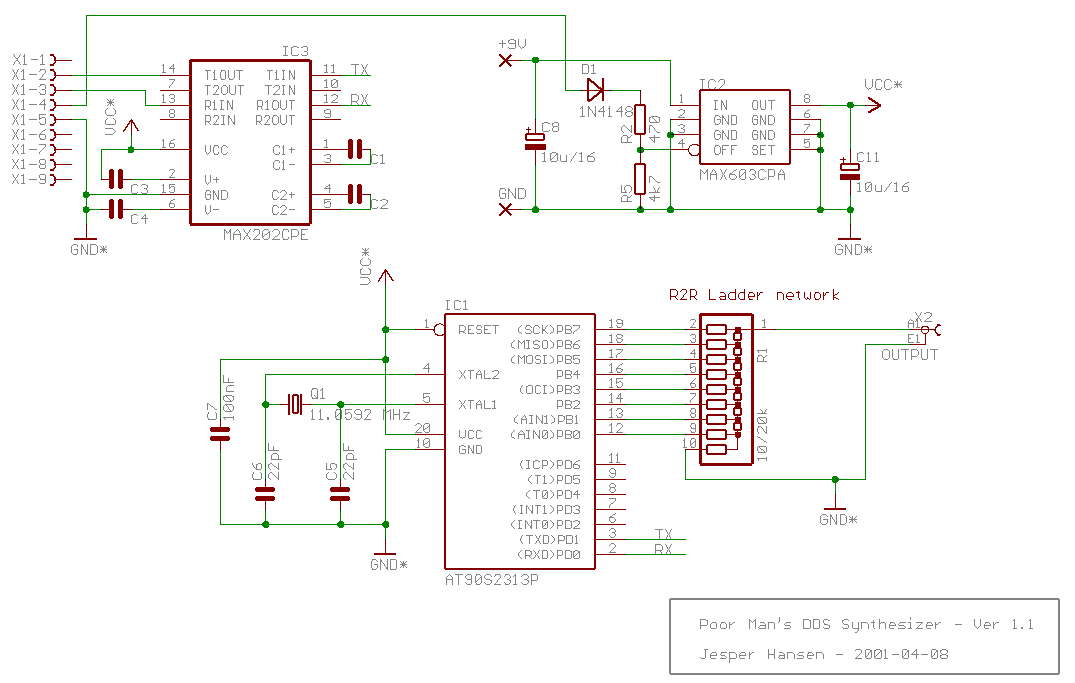
A simple function generator that produces a specific frequency. While awaiting the arrival of the AD9832 chip, a basic version of a Direct Digital Synthesis (DDS) synthesizer was developed using only the AT2313 microcontroller and a resistor network. This device is controlled via RS232 from a small Windows application and can generate sine, sawtooth, triangle, and square waves at frequencies ranging from 0.07 Hz to approximately 200-300 kHz in 0.07 Hz steps, depending on the crystal used. The implementation details of DDS are not elaborated upon here, but the code is straightforward and can be understood through examination. The schematic is notably simple, comprising four main components: a voltage regulator/switch, an RS232 interface chip, the AT2313 microcontroller, and an R2R resistor network. The R2R network connects to PORTB on the AT2313, functioning as a basic digital-to-analog converter (DAC) capable of producing 256 voltage levels. Although neither the resistor network nor the port drivers of the AT2313 exhibit perfect linearity, the system performs adequately. A buffer stage may be necessary due to the relatively high output impedance (in the tens of kOhms). The MAX603 component manages voltage regulation and the power-up/shutdown function, controlled by the Data Terminal Ready (DTR) signal from the serial interface. Consequently, when the control program on the PC is terminated, the miniDDS is also powered down, conserving battery life. The phase accumulator operates at 24 bits, which establishes the output frequency's resolution. The maximum frequency and resolution available are also contingent upon the frequency of the employed crystal.
The function generator circuit is designed to provide a versatile and efficient means of generating various waveforms for testing and experimentation. The AT2313 microcontroller plays a crucial role in the functionality of the device, executing the programmed logic to control the output waveform characteristics. The R2R resistor network, which acts as the DAC, converts the digital output from the microcontroller into an analog voltage. The network’s design allows for a straightforward implementation while achieving adequate performance for most applications.
The voltage regulator, specifically the MAX603, is essential for maintaining a stable operating voltage for the entire circuit, ensuring reliable performance across varying conditions. The RS232 interface allows for easy communication between the PC and the function generator, enabling users to set parameters such as frequency and waveform type through the Windows application. The choice of using RS232 facilitates compatibility with a wide range of devices, making the function generator accessible for various applications.
The output stage of the function generator may require additional buffering to mitigate the effects of high output impedance, which can lead to signal distortion or loading issues when connected to other circuits. This can be achieved by incorporating an operational amplifier configured as a voltage follower, which would provide a low output impedance while preserving the signal integrity.
Overall, this simple function generator exemplifies an efficient design that leverages readily available components, providing a practical solution for generating a variety of waveforms in a compact and cost-effective package. The system's modular design allows for potential upgrades and modifications, such as the integration of the AD9832 chip in the future, which could enhance the functionality and performance of the generator.A simple function generator. Just to generate a certain frequency. While waiting for the AD9832 chip to arrive, I came up with a very simple version of the DDS synth, using just the 2313 and a resistor network. It`s controlled over RS232 from a small Windows program, and can generate Sine-, Sawtooth-, Trangle- and Sqare-waves ranging from 0.
07 Hz to about 200-300 kHz in 0. 07 Hz steps (depending on your crystal). I wont go into details about how a DDS synth works. Maybe later. The code is pretty simple so you should be able to understand how it works by just reading through it. There`s not much to say about the schematic. It`s as simple as can be. Just 4 major parts. A voltage regulator/switch, a RS232 interface chip, the 2313 and the R2R resistor network. The R2R network is connected to PORTB on the 2313, making it a simple D/A converter and makes it possible to output 256 voltage levels.
Neither the resistor network or port drivers of the 2313 is of perfect linearity, but it works pretty well anyway. But you`ll probably need a buffer stage as the output impedance is rather high (tens of kOhms in my case).
The MAX603 handles the voltage regulation as well as the powerup/shutdown function, and is controlled by the DTR signal on the serial interface. So when you shut down the control program on the PC, the miniDDS will be shutdown, saving battery. The phase accumulator uses 24 bits, which determines the resolution of the output frequency. Maximum available frequency and resolution is also dependent on your crystal frequency : 🔗 External reference
The function generator circuit is designed to provide a versatile and efficient means of generating various waveforms for testing and experimentation. The AT2313 microcontroller plays a crucial role in the functionality of the device, executing the programmed logic to control the output waveform characteristics. The R2R resistor network, which acts as the DAC, converts the digital output from the microcontroller into an analog voltage. The network’s design allows for a straightforward implementation while achieving adequate performance for most applications.
The voltage regulator, specifically the MAX603, is essential for maintaining a stable operating voltage for the entire circuit, ensuring reliable performance across varying conditions. The RS232 interface allows for easy communication between the PC and the function generator, enabling users to set parameters such as frequency and waveform type through the Windows application. The choice of using RS232 facilitates compatibility with a wide range of devices, making the function generator accessible for various applications.
The output stage of the function generator may require additional buffering to mitigate the effects of high output impedance, which can lead to signal distortion or loading issues when connected to other circuits. This can be achieved by incorporating an operational amplifier configured as a voltage follower, which would provide a low output impedance while preserving the signal integrity.
Overall, this simple function generator exemplifies an efficient design that leverages readily available components, providing a practical solution for generating a variety of waveforms in a compact and cost-effective package. The system's modular design allows for potential upgrades and modifications, such as the integration of the AD9832 chip in the future, which could enhance the functionality and performance of the generator.A simple function generator. Just to generate a certain frequency. While waiting for the AD9832 chip to arrive, I came up with a very simple version of the DDS synth, using just the 2313 and a resistor network. It`s controlled over RS232 from a small Windows program, and can generate Sine-, Sawtooth-, Trangle- and Sqare-waves ranging from 0.
07 Hz to about 200-300 kHz in 0. 07 Hz steps (depending on your crystal). I wont go into details about how a DDS synth works. Maybe later. The code is pretty simple so you should be able to understand how it works by just reading through it. There`s not much to say about the schematic. It`s as simple as can be. Just 4 major parts. A voltage regulator/switch, a RS232 interface chip, the 2313 and the R2R resistor network. The R2R network is connected to PORTB on the 2313, making it a simple D/A converter and makes it possible to output 256 voltage levels.
Neither the resistor network or port drivers of the 2313 is of perfect linearity, but it works pretty well anyway. But you`ll probably need a buffer stage as the output impedance is rather high (tens of kOhms in my case).
The MAX603 handles the voltage regulation as well as the powerup/shutdown function, and is controlled by the DTR signal on the serial interface. So when you shut down the control program on the PC, the miniDDS will be shutdown, saving battery. The phase accumulator uses 24 bits, which determines the resolution of the output frequency. Maximum available frequency and resolution is also dependent on your crystal frequency : 🔗 External reference
Warning: include(partials/cookie-banner.php): Failed to open stream: Permission denied in /var/www/html/nextgr/view-circuit.php on line 713
Warning: include(): Failed opening 'partials/cookie-banner.php' for inclusion (include_path='.:/usr/share/php') in /var/www/html/nextgr/view-circuit.php on line 713
